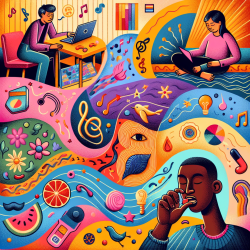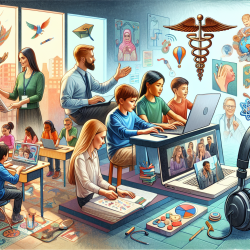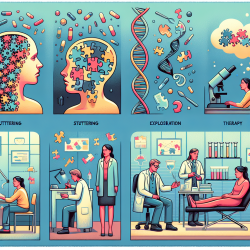Understanding Autism Through Sensory Experiences
Autism spectrum disorder (ASD) is traditionally understood through a cognitive lens, focusing on difficulties in social communication and interaction. However, recent research, such as the study "Autism and the Sensory Disruption of Social Experience," suggests a shift towards understanding autism through its sensory and embodied dimensions. This blog post will explore how sensory differences impact social experiences in autism and how practitioners can utilize these insights to improve therapeutic outcomes.
The Role of Sensory Differences in Autism
According to the research by Boldsen (2022), sensory differences are a significant aspect of autism, affecting how social experiences are perceived on a pre-reflective level. The study highlights three primary ways sensory differences manifest in social interactions:
- Sensorially Disturbing Events: Social encounters can be chaotic and overwhelming due to heightened sensory inputs, such as loud noises or crowded spaces.
- Alienation and Detachment: The sensory overload can make others appear unfamiliar and threatening, leading to a sense of detachment from the social world.
- Active Search for Meaning: Individuals with autism may employ deliberate practices to seek perceptual and social meaning in disorienting encounters.
Implications for Practitioners
For practitioners, understanding the sensory dimensions of autism can lead to more effective therapeutic strategies. Here are some practical applications:
- Environment Modifications: Create sensory-friendly environments that minimize overwhelming stimuli, such as reducing noise levels or providing quiet spaces.
- Personalized Sensory Interventions: Tailor interventions to individual sensory profiles, using tools like noise-canceling headphones or weighted blankets to help manage sensory overload.
- Encouraging Sensory Exploration: Support individuals in exploring their sensory preferences and developing coping strategies for challenging environments.
Encouraging Further Research
While this study provides valuable insights, it also opens avenues for further research. Practitioners are encouraged to explore how sensory experiences can be integrated into therapeutic practices and how these practices can be tailored to individual needs. Understanding the sensory dimensions of autism not only enhances therapeutic outcomes but also promotes a more inclusive and empathetic approach to autism care.
To read the original research paper, please follow this link: Autism and the Sensory Disruption of Social Experience.










